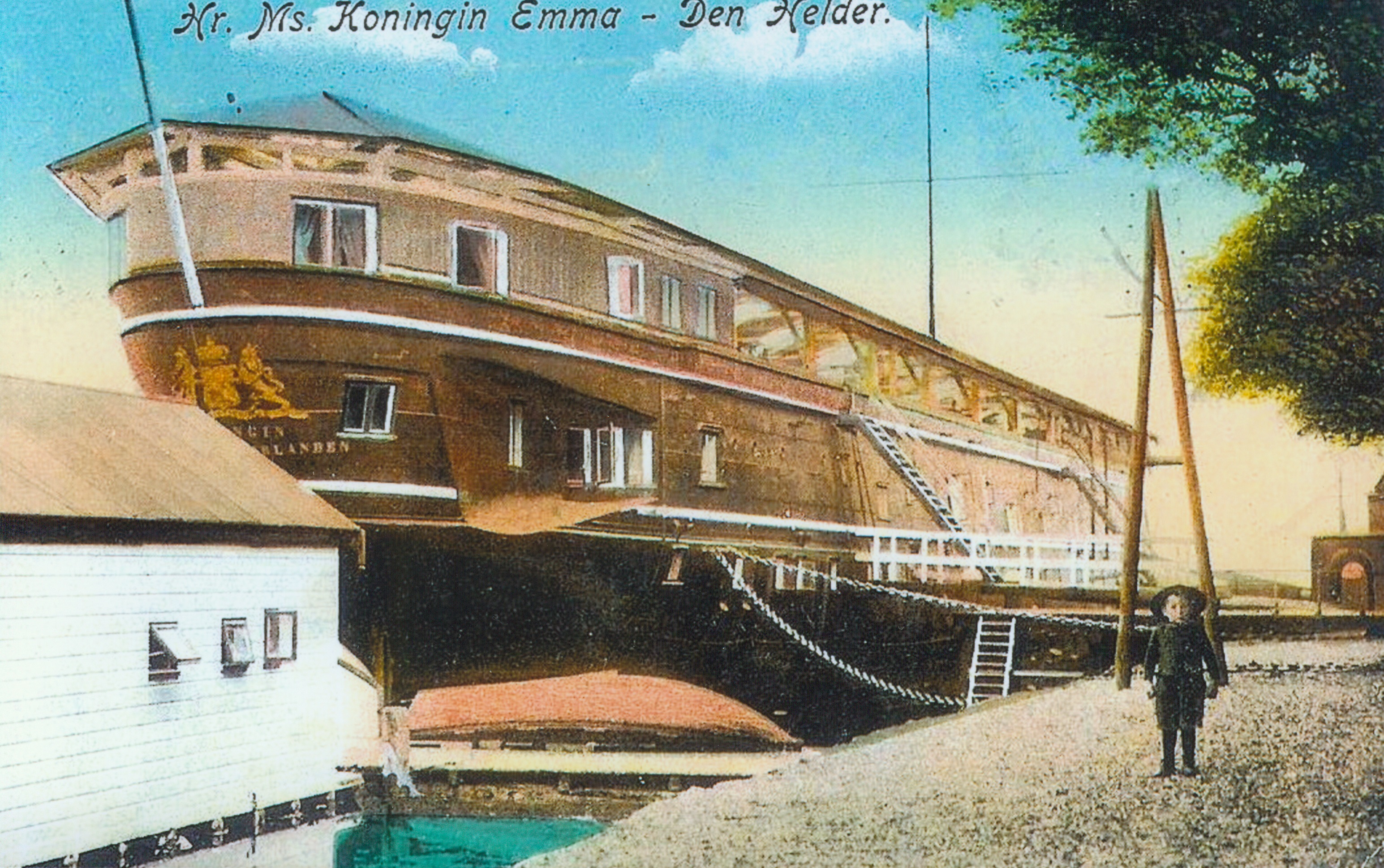In the order administration dated 5 September 1880 was the order for account of the Dutch Department of Navy board Amsterdam described as the delivery of a steam- and hand steering gears Bow McLachlan’s Patent for the screw steam ship 1st class Zr. Ms. Koningin Emma der Nederlanden for a contracted price of ƒ 2.0680. Building costs totally ƒ 13.348,06 (steering gear ƒ 6.170, material ƒ 2.159,53, labour ƒ 2.507,26, expenses 65% labour ƒ 1.629,72, travel costs ƒ 881,55) resulting in a profit of ƒ 7.331,94.
Source
Archive
Kon. Mij. De Schelde, Vlissingen, Netherlands 1875-1970 (Municipality Archive
Vlissingen T.214.1216).
Note
1. Also called frigate, call sign GQMF, on stocks
as De Ruyter at the naval yard at Amsterdam, Netherlands on 6 November 1876,
completed for the half on 31 October 1876, renamed Koningin Emma der
Nederlanden on 7 January 1879, launched on 20 January 1879, commissioned on 1
December 1881, decommissioned on 22 May 1896 for repairs, commissioned on 16
June 1897, decommissioned on23 June 1900, converted at the shipyard De Lastdrager
at Den Helder, Netherlands into an accommodation ship in 1908, commissioned on
16 November 1908, guard ship at Willemsoord, Netherlands in 1920, captured by
the German forces at Willemsoord on 14 May 1940, capsized and sunk at Den
Helder in 1942, salvaged in April 1943 and scuttled north of Fort Harssens,
displacement 3.160 ton and as dimensions 80,00-91,85 x 12,50 x 6,10 metres, horsepower
2.732hp/450 nhp, speed 14,10
miles, one double bladed screw with a diameter of 4,88 metres, sail area 1.585 square metres,
coal bunker capacity 325 ton for 5ive days full speed, iron built wood planked
although the hull above the waterline and some other parts were made of steel
to be able to increase the ammunition and coalbunker capacity, her crew
numbered 200 men and the armament consisted of 6-17cm guns and 4-12cm guns. The
engines and boilers were manufactured by the Koninklijke Fabriek van Stoom- en
andere werktuigen te Amsterdam,
Netherlands.

